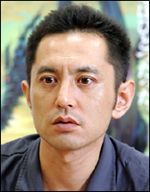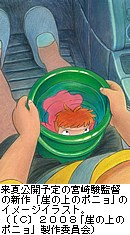The unified local elections began their official campaign periods today, with the Tokyo Gubernatorial election emerging as the most interesting to watch, as incumbent Ishihara under fire for a number of scandals and main challenger Shiro Asano looking like a real contender (though an underdog) in early polls.
Still, I can’t say I’m that interested because the elections probably won’t have much direct effect on national politics. I mean, I guess I’m keen to see if localities continue to elect fewer ex-national bureaucrats and “elect representatives who will end the traditional dependence on subsidies and reshape their communities into strong entities through wisdom and innovative ideas” as the Asahi suggests.
But unless the LDP-backed candidates somehow fare absolutely miserably, I can’t really see them having a huge effect on, say, whether Abe will stay in office. So let’s focus on the latest juicy political speculation from Shukan Bunshun:
Signs of “Certain Political Reorganization” after the Upper House Election – Both LDP and DPJ may break up if ruling coalition loses majority
March 20
Political maneuvering with an eye toward what happens after the July upper house elections have begun within the LDP. The scenario is “If the ruling coalition loses its majority, the LDP and DPJ will break up and cause a major political reorganization.” Nagata-cho is squirming this Spring.
On the evening of March 12, 4 influential Diet members gathered at a Tokyo restaurant. They are former LDP Vice President Taku Yamasaki, Koichi Kato, Makoto Koga (the last two both former LDP Secretaries General), and present LDP Policy Council Chief Toshihiro Nikai. Except for Nikai, a member of the LDP senior leadership, the men have all kept their distance from Prime Minister Abe. Their are called the “New YKK,” a name taken from their initials, and also held a top-secret meeting on February 19. This meeting, on the surface, reported concluded with “unanimous support for the Abe cabinet leading up to the Upper House election,” but the content of the meeting had to be different considering who was in attendance.
When the conversation got to the point, Kato brought up the upper house election:
“This won’t be an ordinary election (since unaffiliated votes are moving away from the LDP). It’s going to be a tough election.”
After Kato offered his analysis, Koga and Yamasaki nodded, and revealed their opinions:
“If we lose the majority, then both the Diet and the administration will be very tough to manage.” However, Nikai, his position in the party being what it is, listened intently.
This summer’s upper house election (voting will be held July 22) has been billed as “a battle for supremacy,” but people have started making political maneuvers behind the scenes aimed at after the election. This New YKK meeting is just one example. The key words in meetings like these are “the ruling coalition losing the majority in the upper house” and “political reorganization.” These words were actually used in the above-mentioned meeting. Koga: “If, for instance, the ruling coalition loses its majority in the upper house, there is no need to dissolve the lower house. In that case, we should keep a political reorganization within our field of vision.” (to a group of reporters in Saga Prefecture, March 11)
Yamasaki joined in, saying “If, heaven forbid, the LDP loses in the upper house election, it will be very difficult to manage the political landscape in the 3 years until the next upper house election. In that case, there are people who would call for dissolution of the lower house and a general election, but that would be meaningless since it’s the upper house that would be paralyzed… In order to restore governing ability, there would be no choice but reorganization. (March 9, in an interview with Asahi Shimbun)
An LDP official close to Kato reveals more detail, but prefaced his explanation by saying “This is only if the LDP loses its majority in the upper house.” He went on:
“This is probably an idea thought up by the New YKK, led by Kato. They are aiming to rope in some DPJ members and form a ‘non-Abe, non-Aso’ liberal administration. They have no other options if the LDP loses the upper house election.”
In November, Kato met with Yohei Kono, speaker of the lower house, possibly to test the waters. Kono is well known, along with Kato, as representatives of the LDP’s doves, but the two had a “bad breakup” when the former Miyazawa faction split up. After patching things up, they reportedly agreed at the meeting to “stop the right-leaning rampage and cooperate from here on out.”
Of course, there is a potential partner for this “political reorganization.” The target is the DPJ, Japan’s top opposition party. Party president Ichiro Ozawa, who leads the party, is infamous for shaking things up. Even recently, Ozawa has sounded positive about a shakeup: “The opposition should take a majority (in the upper house election) and if possible realize a political reorganization and a healthy 2-party system… The LDP cannot exist in its present form if the opposition takes a majority in the upper house election. They will split into groups along ideological lines.” (in Tottori city on Feb 10) He has expressed a desire for political reorganization that takes in the LDP as well.
Atsuo Ito, a political analyst with experience working for both the LDP and the DPJ, had this to say:
“In Ozawa’s book, the only shortcut to taking control of the government is political reorganization. Ozawa’s political stance has shifted from right to left and back again, but he has been consistent in seeking reorganization and a 2-party system. The now-defunct Shinshinto and Liberal Party were nothing but tool to achieve that reorganization.”
And the rumors in Nagata-cho speculate: “If the opposition takes a majority in the upper house, Ozawa will most certainly try to split the LDP.”
In fact, in the “June Transformation” in 1994 over who would succeed Tsutomu Hata as PM, Ozawa (then president/sec gen of the Shinseito) got former Prime Minister Toshiki Kaifu to leave the LDP and make a run at the premiership. He also made overtures toward former PM Yasuhiro Nakasone and former Foreign Minister Michio Watanabe (now deceased) and set up a split in the LDP. People are wondering if he’ll try the same trick again.
Still, Kato, Yamasaki and the rest are reportedly unlikely to team up with Ozawa. The above-mentioned LDP official remarks: “[Teaming with Ozawa] might be an option, but that would bring with it a lot of halation. They are probably actually prioritizing the “non-Ozawa” conservative elements of the DPJ.”
The Kato-Yamasaki group is probably eyeing the mid-career and younger conservative DPJ Diet members, such as the Maehara Group. There is some dissatisfaction among the conservative DPJ Diet members with Ozawa, who gives consideration to former Socialist Party factions including Takahiro Yokomichi. Also, one mid-career member from the DPJ explains, “They are tired of being in the opposition and are more and more seeking to join the ruling parties.” If both the LDP and DPJ have potential to split up, there’s a good possibility that the two groups could come together.
Kamei Shizuka of Kokumin Shinto may also prove to be a key player. And since the epicenter of any potential reorganization will be “the ruling coalition losing their majority in the upper house” one mustn’t ignore the actions of Mikio Aoki, chairman of the LDP’s upper house caucus, and Toranosuke Katayama, Secretary General of the upper house LDP caucus. Both men are high-ranking members of the LDP’s Tsushima faction, which is brimming with dissatisfaction with the Abe administration. A political reorganization won’t have much traction only with this New YKK, and it goes without saying that the actions of the Tsushima faction, which is not a leading faction and boasts strong numbers in the upper house.

 This will be the first film from Hayao Miyazaki ever since Howl’s Moving Castle achieved huge box office totals of 19.6 billion yen when it was released 4 years ago (November 2004). The new film is a story of Ponyo, a goldfish princess who wants to become human, and the five-year-old Sosuke. Producer Toshio Suzuki explains, “This is kind of like Miyazaki’s version of ‘The Little Mermaid.'” Tales of Earthsea, which came out last year, was supposed to have been directed by Hayao himself — he negotiated the film rights with the original author 20 years ago — but the director changed to his eldest son, Goro (pictured). As J-Cast reported earlier:
This will be the first film from Hayao Miyazaki ever since Howl’s Moving Castle achieved huge box office totals of 19.6 billion yen when it was released 4 years ago (November 2004). The new film is a story of Ponyo, a goldfish princess who wants to become human, and the five-year-old Sosuke. Producer Toshio Suzuki explains, “This is kind of like Miyazaki’s version of ‘The Little Mermaid.'” Tales of Earthsea, which came out last year, was supposed to have been directed by Hayao himself — he negotiated the film rights with the original author 20 years ago — but the director changed to his eldest son, Goro (pictured). As J-Cast reported earlier:
